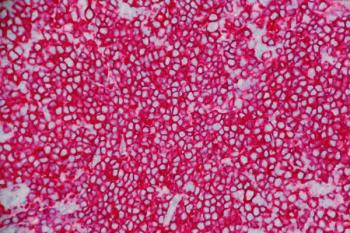
Effect of Pharmacist Recommendation on Antibiotic Duration Prescribing at Hospital Discharge
Antibiotic prescribing at hospital discharge is a component of pharmacist-led antimicrobial stewardship programs that is often overlooked.
Abstract
Purpose
Antibiotic prescribing at hospital discharge is a component of pharmacist-led antimicrobial stewardship programs that is often overlooked. Many patients complete several days of an antibiotic course of therapy during their inpatient stay and then are prescribed a new course of therapy to begin at discharge.
The purpose of this study is to evaluate a pilot program consisting of pharmacist-led antimicrobial stewardship that aims to reduce unnecessary antibiotics prescribed at hospital discharge.
Methods
This observational pilot study was conducted at an acute care hospital in the Midwest. The primary outcome for this study was the effect of pharmacist intervention, measured as reduction in number of antibiotic days prescribed and reduction in number of patients prescribed excess antibiotics. The study population included data from adult general medicine patients with diagnoses of urinary tract infection (UTI), pneumonia, skin and soft tissue infection (SSTI).
Results
A total of 51 patients were included in the historic control group and 38 patients were included in the intervention group. There was no significant difference between historic control and intervention group for patient length of stay (Mann-Whitney U=.861, p=.663) or diagnosis type. Inpatient and outpatient antibiotic days between the historic control and intervention group showed no significant difference (inpatient days, p = .087; outpatient days, p = .090). Excess total antibiotic days between the historic control and intervention group showed no significant difference, although patients in the intervention period were less likely to have excess days of antibiotics (OR=.56, CI .23-1.39).
Conclusion
Pharmacist intervention did not result in a significant difference in total antibiotic days between groups.
Introduction
Antimicrobial stewardship (AMS) consists of coordinated interventions designed to improve and measure the appropriate use of antibiotic agents by promoting the selection of the optimal antibiotic drug regimen, including dosing, duration of therapy, and route of administration.1 A recently published cross-sectional study of 192 hospitals found that more than half of antibiotic prescribing in select indications was not supported by recommended prescribing practices.
The rates for diagnoses, such as UTI, and community-acquired pneumonia were highest, at 77% and 79%, respectively.2 While AMS efforts have made great strides in improving outcomes, this study outlines the need for continuing improvement and renewed focus on AMS in the inpatient setting.
AMS in the inpatient setting can be complex and often includes participation from an interdisciplinary team, such as prescribers, pharmacists, nurses, microbiology laboratory staff, and hospital leadership. A program with such a large team can quickly become unorganized, so to help hospital systems organize their AMS efforts and become as successful as possible, The Centers for Disease Control and Prevention (CDC) published a guidance document entitled “The Core Elements of Hospital Antibiotic Stewardship Programs.”
Inside this document, the CDC provide points for each member of the AMS team to become successful in their AMS efforts, including pharmacy. The points for pharmacy contain recommendations engaging pharmacy as a leader or co-leader of the AMS team and provides a list of specific interventions that should be prioritized.
Of these specific interventions, a recommendation is given to focus on using the shortest effective antibiotic duration. Specifically, contacting the prescriber if the total days of inpatient and post-discharge antibiotic therapy exceeds the recommended duration.3 The current study is focused on post-discharge/transition of care antibiotic prescribing.
There have been fewer studies published on discharge antibiotics compared to other aspects of AMS. However, there are several examples of discharge antibiotic review studies in the literature.
A retrospective cohort study by Yogo et al was conducted to analyze a developed intervention to improve antibiotic selection and shorten treatment durations.4 The primary outcomes were total prescribed duration of therapy and use of antibiotics with broad gram-negative activity. Out of 363 patients whose oral antibiotic prescriptions at hospital discharge were reviewed by a pharmacist, 85 recommendations were made by the pharmacist to de-escalate or shorten duration of therapy, and 66 (67%) were accepted by the prescriber.
Another study by Chavada et al was conducted to assess the appropriateness of discharge antibiotics and analyze the effect of pharmacist intervention.5 They conducted discharge antimicrobial review on 263 prescriptions over a 4-week period and intervened on 62 (21%) prescriptions for incorrect duration of therapy. The authors emphasized the need for increased focus on the discharge transition of care to improve AMS in their hospital system.
This study aimed to analyze the efficacy of a pharmacist-driven transition of care workflow in which pharmacists reviewed antibiotic prescriptions written for continuing antibiotic therapy at the time of hospital discharge and determined whether the number of days was appropriate in comparison to the number of antibiotic days received inpatient.
Methods
Pilot Program
The pilot program being analyzed in this study comprised of consistent pharmacist review of antibiotic prescriptions written at hospital discharge. For patients with discharge antibiotic orders, the reviewing pharmacist was responsible to check indication for antibiotics (primary diagnosis), antibiotic prescribed during admission, number of days antibiotics were administered during admission, and number of days prescribed for patient to receive after hospital discharge.
If the pharmacist found that the antibiotic days prescribed for outpatient use plus the previously administered inpatient antibiotic days given exceeded the recommended duration for the indication, they contacted the prescriber to discuss reducing the number of days prescribed for outpatient use.
Study Setting and Design
The single-center study was completed at a 133-bed Midwestern medical center. The pilot program being analyzed in this study was conducted from October 1 to December 31, 2020, and results were compared retrospectively with a historic control group from October 1 to December 31, 2019.
The study included patients 18 years of age and older discharged from the general medical/surgical units during the study period. Primary diagnoses included were pneumonia, chronic obstructive pulmonary disease, UTI, and SSTI. Patients were excluded from the study if they were prescribed antibiotics from an infectious disease physician, antibiotics were ordered for outpatient infusion, or if they were on any antibiotics for an indication of prophylaxis before or during their current admission.
This project was determined by the Essentia Health Institutional Review Board to not be human subject research.
Results
The specific aims for this study were to determine whether pharmacist intervention decreases the quantity of patients prescribed excessive antibiotic days and to assess whether pharmacist intervention is effective in reducing prescribed antibiotic days. The historic control population included 51 patients and the intervention period population included 38 patients. There was no significant difference between historic control and intervention group for patient length of stay (Mann-Whitney U=.861, p=.663) or diagnosis type (Table 2).
Inpatient and outpatient antibiotic days between the historic control and intervention group showed no significant difference (inpatient days, p = .087; outpatient days, p = .090). Excess total antibiotic days between the historic control and intervention group showed no significant difference, although patients in the intervention period were less likely to have excess days of antibiotics (OR=.56, CI .23-1.39). After adjusting for within-patient correlation, the overall rate of excess antibiotic days was not significantly different (Wald χ21 = 1.6 p = .204).
Primary diagnosis was a significant predictor of whether there would be excess prescribing days (Wald χ24 = 12.34 p = .015) with a diagnosis of UTI having a significantly higher rate of excess antibiotic days than the other included primary diagnoses.
Discussion
The results of this study do not show that pharmacist intervention had a significant impact on discharge antibiotic prescribing during the study period. However, the study results do show that prescribing patterns for the included diagnoses were widely appropriate and did not often require pharmacist intervention.
One exception to the appropriate prescribing patterns is for UTI, which was shown to have a higher rate of excess antibiotic days than the other included diagnoses. This correlates with the findings of Magill et al., in which 77% of UTI prescribing was not supported by recommended prescribing patterns. Evidence-based UTI prescribing is an area of potential education for prescribers and pharmacists that could have a large impact on reduction in antibiotic days.
This study has several limitations. It is a single-center study with a short intervention time of 3 months. The study was also conducted during a time of a surge in COVID-19 cases in the region, increasing pharmacist workload and increasing pharmacist-to-patient ratios.
Additionally, this study was dependent on pharmacist buy-in and time during their shift to review the discharge patient lists. There was not adequate staff available for this to be accomplished at all times during the study period (nights, weekends). For future studies, a longer intervention period and expansion to include more disease states and hospital units is needed.
About the Authors
McKenzie K. Hill, PharmD, PGY-1 pharmacy resident, Essentia Health, Fargo, ND.
Irina V. Haller, PhD, MS, research scientist, Essentia Institute of Rural Health, Duluth, MN
Colleen M. Renier, BS, biostatistician, Essentia Institute of Rural Health, Duluth, MN.
Amy J. Aeilts, PharmD, clinical pharmacist, Essentia Health, Fargo, ND.
Stephanie M. Nixon, PharmD, antimicrobial stewardship program manager, Essentia Health, Duluth, MN.
References
1. Society for Healthcare Epidemiology of America; Infectious Diseases Society of America; Pediatric Infectious Diseases Society. Policy statement on antimicrobial stewardship by the Society for Healthcare Epidemiology of America (SHEA), the Infectious Diseases Society of America (IDSA), and the Pediatric Infectious Diseases Society (PIDS). Infect Control Hosp Epidemiol. 2012;33(4):322-327. doi:10.1086/665010
2. Magill SS, O’Leary E, Ray SM, et al. Assessment of the Appropriateness of Antimicrobial Use in US Hospitals. JAMA Netw Open. 2021;4(3):e212007. doi:10.1001/jamanetworkopen.2021.2007
3. Core Elements of Hospital Antibiotic Stewardship Programs. https://www.cdc.gov/antibiotic-use/core-elements/hospital.html. Published August 31, 2020. Accessed November 11, 2020.
4. Yogo N, Shihadeh K, Young H, et al. Intervention to Reduce Broad-Spectrum Antibiotics and Treatment Durations Prescribed at the Time of Hospital Discharge: A Novel Stewardship Approach. Infect Control Hosp Epidemiol. 2017;38(5):534-541. doi:10.1017/ice.2017.10
5. Chavada R, Davey J, O'Connor L, Tong D. 'Careful goodbye at the door': is there role for antimicrobial stewardship interventions for antimicrobial therapy prescribed on hospital discharge?. BMC Infect Dis. 2018;18(1):225. Published 2018 May 16. doi:10.1186/s12879-018-3147-0
Newsletter
Stay informed on drug updates, treatment guidelines, and pharmacy practice trends—subscribe to Pharmacy Times for weekly clinical insights.














































































































































































































